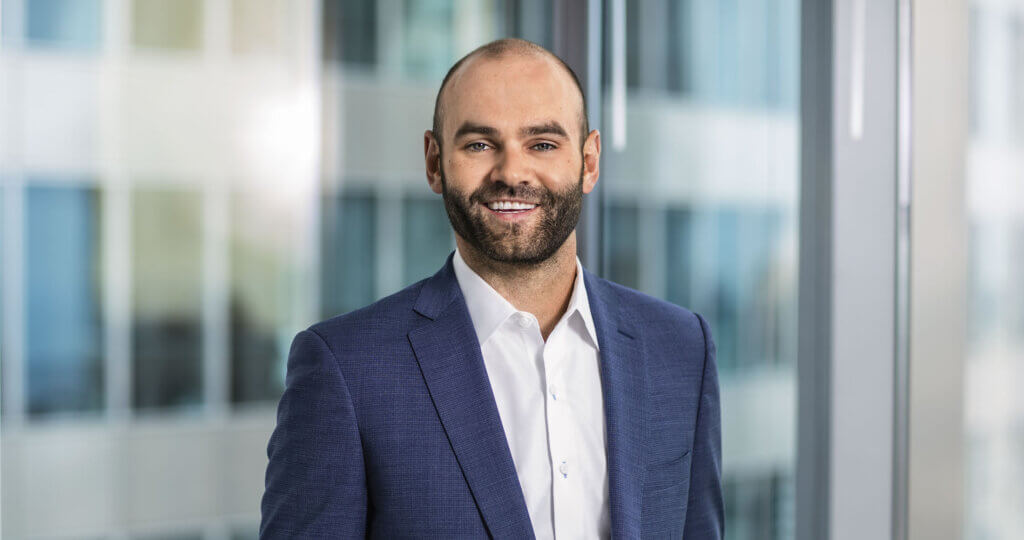Oakmark Equity and Income Fund - Investor Class
Average Annual Total Returns 06/30/15
Since Inception 11/01/95 10.75%
10-year 7.88%
5-year 10.85%
1-year 2.80%
3-month 0.06%
Gross Expense Ratio as of 09/30/14 was 0.74%
Past performance is no guarantee of future results. The performance data quoted represents past performance. Current performance may be lower or higher than the performance data quoted. The investment return and principal value vary so that an investor’s shares when redeemed may be worth more or less than the original cost. To obtain the most recent month-end performance data, view it here.
Last quarter we began our report by discussing the lack of direction the stock market had exhibited. This trend continued in the June quarter to the effect that during the first six months of the calendar year the S&P 500 hasn’t yet been up or down more than 3.5%. In the history of the stock market this is the first year to have made it to July without breaching the 3.5% barrier in either direction. In fact, before 2015 the index had been up or down at least 5% by the end of June in every previous year except 1952, 1993 and 2004. A newly awakened Rip van Winkle might think that this lack of directional volatility implied a very calm economy and world political environment, to which we would reply “Greece, Islamic State, negative first quarter GDP….”
The Equity and Income Fund earned a minimal positive return in the quarter, while the Lipper Balanced Fund Index, the Fund’s performance benchmark, lost a minimal amount. Through most of the June quarter our risk-averse approach to fixed-income investing proved beneficial as rates generally increased, although the Greece crisis precipitated a sudden trend reversal at the quarter’s close. For the calendar six months the Fund returned 1% compared to 1% for the Lipper. The Fund’s nine-month fiscal year return also rounded upwards—in this case to 5% compared to 4% for the Lipper. The annualized compound rate of return since the Fund’s inception in 1995 is 11% while the corresponding return to the Lipper Index is 7%.
Bank of America, Omnicare, MasterCard, Philip Morris International and Foot Locker led the list of contributors to return for the quarter. The largest detractors were General Motors, TE Connectivity, Oracle, Union Pacific and Flowserve. For the calendar six months United Health, Foot Locker, Omnicare, Lear and CVS Health contributed most while National Oilwell Varco, Oracle, Union Pacific, Glencore and Bank of America were the biggest detractors from return. For the nine months of the Fund’s fiscal year United Health, CVS Health, Omnicare, MasterCard and Lear led the contributors list, and National Oilwell Varco, Glencore, Dover, Ultra Petroleum and Knowles detracted. The Fund’s holdings in health care have benefited from that industry’s significant increase in valuations while issues that are sensitive to commodity prices have been under pressure.
Active Management, Active Share, Investor Return
Over the past decade academics have devoted considerable research to investment management, attempting to discern whether active management really provides value to its clients. Recent research findings generally please us for reasons we will address below, but we must first challenge a basic foundational premise. The research focuses on portfolio returns versus benchmarks but does not provide similar focus on investor outcomes. If portfolios are beating benchmarks but clients are not benefiting to the same degree, what has been accomplished? According to financial research firm Dalbar, mutual fund investors give up as much as 1.79 percentage points of their funds’ returns annually because they make poor transaction decisions. In managing the Equity and Income Fund we strive to craft portfolios and portfolio outcomes that both meet the financial needs of our clients and also enable our clients to maintain their investments in the Fund for long time periods. To that end we were pleased to learn from Dalbar that investors in Equity and Income had captured most of the return that the Fund has generated. We suggest that academics focus less on artificial benchmarks and more on client satisfaction.
Nevertheless, as noted above, academics continue to evaluate active management against passive alternatives. We have never met a client who stated their investment needs in the terms of beating an index fund. But we digress. In the previous decade the concept of “active share” developed in an attempt to explain when active managers are able to beat passive alternatives. Active share basically measures the degree to which an investing pool differs in its constituents from the constituents of its benchmark. Academics gave the term closet indexers to funds which, though actively managed, closely emulate their benchmarks. In contrast, high active share funds differ materially from their respective benchmarks. Early work suggested that high active share alone was sufficient to increase the probability of benchmark outperformance, but quickly this point of view came under attack, requiring additional refinement. In a 2014 monograph Martijn Cremers and Ankur Pareek argued that it is the combination of high active share with low portfolio turnover that produces the opportunity for outperformance1. They write, “Fund managers may be able to spot market mispricing that is only reversed over longer periods, requiring strong manager conviction and investor patience….Our evidence shows that, among high Active Share funds, patiently managed portfolios have been most likely to outperform. Patient funds are those which trade relatively infrequently, i.e., funds with long holding durations or low portfolio turnover.” In addition, they write, “The clear majority of the outperformance of the patient and active mutual fund managers seems due to their picking safe (low beta), value (high book-to-market) and quality (profitable, growing, less valuation uncertainty, higher payout) stocks, and then sticking with their convictions and holding on to those over relatively long periods.” Although this imperfectly describes our investing style, it is a decent approximation.
We have long argued that our value investing philosophy stands the test of time because it only requires that: first, human nature does not change; and second, we maintain our discipline. We are quite pleased to read academic substantiation of our investing style, but we recognize that in academic research it is never “game over.”
Transaction Activity
During the quarter we initiated new positions in General Electric and Kate Spade, and we eliminated three small holdings—Atlas Air Worldwide, FNFV Group and Lonmin. The Fund had received shares of both FNF Ventures and Lonmin as distributions from other holdings. The Fund’s overall asset allocation ended the quarter little changed from the previous quarter.
General Electric (GE) is a company with businesses we have always admired, but we have questioned the stock’s valuation and management’s focus on returns when making capital allocation decisions. However, the appointment of a new CFO in mid-2013 ushered in significant changes. Since then, GE has, in our view, acquired assets cheaply (Alstom) and sold assets at good prices (Synchrony and its appliances division). GE is also significantly reducing its financial services business to focus on those lending activities that are core to its industrial products. The company has totally revamped its variable compensation plan for thousands of employees, emphasizing factors that drive return on invested capital, which should boost future results. Some investors may have a stale opinion of GE after the past 15 years of persistent underperformance, but we believe the remaining businesses will grow in excess of global GDP with high returns on capital. At less than 14x our estimate of normalized EPS and with over a 3% dividend yield, we believe the current valuation is attractive for this good collection of businesses.
Kate Spade & Company (KATE) designs and markets handbags, apparel and other accessories primarily under its eponymous brand. We view KATE as a high-growth company with multiple ways to expand profitability. The recent struggles of high-profile competitors have caused some investors to question this potential. The fear is overdone in our opinion. We believe KATE’s fundamentals remain robust and that the company’s brand momentum and potential market share gains will be able to overcome industry headwinds.
As always, we thank our shareholders for entrusting their assets to the Fund and welcome your questions and comments.
As of 06/30/15, Bank of America Corp. represented 3.8%, Omnicare, Inc. 1.3%, MasterCard, Inc., Class A 2.0%, Philip Morris International, Inc. 1.5%, Foot Locker, Inc. 2.4%, General Motors Co. 3.2%, TE Connectivity, Ltd. 2.6%, Oracle Corp. 3.6%, Union Pacific Corp. 1.5%, Flowserve Corp. 1.7%, UnitedHealth Group, Inc. 1.8%, Lear Corp. 1.5%, CVS Health Corp. 2.8%, National Oilwell Varco 1.6%, Glencore PLC 1.2%, Dover Corp. 2.7%, Ultra Petroleum Corp. 0.4%, Knowles Corp. 0.3%, General Electric Co. 1.0%, Kate Spade New York 0.2%, Atlas Air Worldwide Holdings, Inc. 0%, FNF Ventures 0%, and Lonmin PLC 0% of the Oakmark Equity and Income Fund’s total net assets. Portfolio holdings are subject to change without notice and are not intended as recommendations of individual stocks.
Click here to access the full list of holdings for The Oakmark Equity and Income Fund as of the most recent quarter-end.
The S&P 500 Total Return Index is a market capitalization-weighted index of 500 large-capitalization stocks commonly used to represent the U.S. equity market. All returns reflect reinvested dividends and capital gains distributions. This index is unmanaged and investors cannot invest directly in this index.
The Lipper Balanced Funds Index measures the performance of the 30 largest U.S. balanced funds tracked by Lipper. This index is unmanaged and investors cannot invest directly in this index.
EPS refers to Earnings Per Share and is calculated by dividing total earnings by the number of shares outstanding.
1“Patient Capital Outperformance: The Investment Skill of High Active Share Managers Who Trade Infrequently”. Martijn Cremers (University of Notre Dame) & Ankur Pareek (Rutgers Business School). September 2014.
The Fund invests in medium- and lower-quality debt securities that have higher yield potential but present greater investment and credit risk than higher-quality securities, which may result in greater share price volatility. An economic downturn could severely disrupt the market in medium or lower grade debt securities and adversely affect the value of outstanding bonds and the ability of the issuers to repay principal and interest.
The Oakmark Equity and Income Fund’s portfolio tends to be invested in a relatively small number of stocks. As a result, the appreciation or depreciation of any one security held by the Fund will have a greater impact on the Fund’s net asset value than it would if the Fund invested in a larger number of securities. Although that strategy has the potential to generate attractive returns over time, it also increases the Fund’s volatility.
The discussion of the Fund’s investments and investment strategy (including current investment themes, the portfolio managers’ research and investment process, and portfolio characteristics) represents the Fund’s investments and the views of the portfolio managers and Harris Associates L.P., the Fund’s investment adviser, at the time of this letter, and are subject to change without notice.




